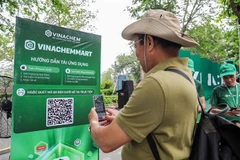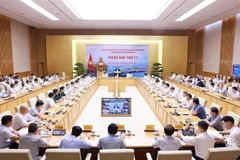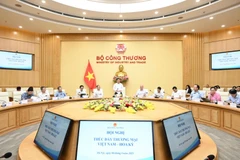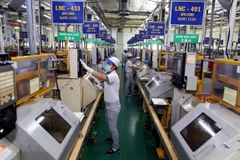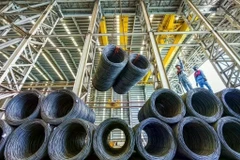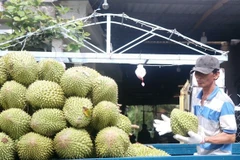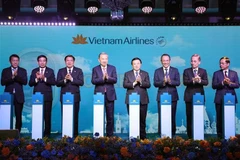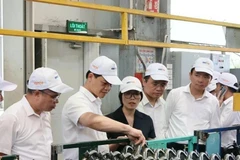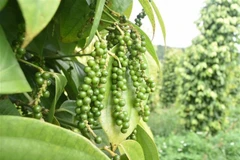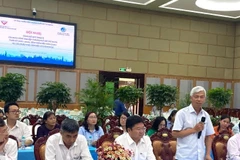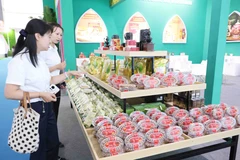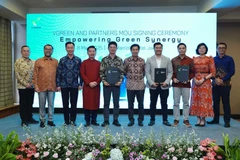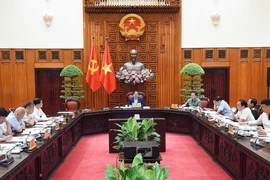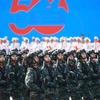In the first seven months of 2014, the country’saquatic exports picked up 24.5 percent from a year earlier to 4.2billion USD with the US, the EU, Japan, the Republic of Korea (RoK) andChina as top importers.
Such a pace was fuelled by strong shrimpshipments which saw double-digit growth in many markets, said theVietnam Association of Seafood Exporters and Producers (VASEP). Shrimpexport to the US and the RoK even posted three-digit increases.
Inthe first half of this year, white-legged shrimp brought home 1.06billion USD, shooting up 133 percent compared to the same period lastyear.
Shrimp exports for the period almost reached 1.8 billionUSD, a year-on-year increase of 62 percent, and accounted for 49.5percent of total export revenues from aquatic products.
NguyenHuy Dien, deputy head of the Directorate of Fisheries under the Ministryof Agriculture and Rural Development, attributed the achievement tostable material supply and good control over diseases of shrimps.
Rising demand also pushed the export of other kinds of crustacean, squid and octopus up by 14 – 21 percent.
Meanwhile, Vietnam’s efforts to ensure the quality of its products have been paid off.
Tosatisfy strict quality regulations by importers such as Japan, the USand the EU, relevant agencies have closely monitored the trading and theuse of substances used in aquaculture, helped farmers with professionaltechniques, and imposed sterner rules on cultivation.
Atpresent, some 100 tra fish farms covering more than 2,800ha of water,about 40 percent of Vietnam’s tra fish farming area, have receivedsustainable production certificates such as VietGAP, ASC, BAP, SQF1000/2000 CM. Notably, 2,000ha of them have been confirmed as meetingGlobalGAP standards.
All frozen food processing companies inVietnam have satisfied the national food safety standards and areoperating under the HACCP quality management system, eligible forexporting their products.
Among them, 415 (or over 73 percent) seafood processing plants in the country are qualified for shipping their goods to Europe.
Notably,Vietnam is piloting a tuna production chain following Japanesestandards in three central provinces, namely Binh Dinh, Phu Yen andKhanh Hoa.
The shipment of aquatic products has also beenassisted by trade promotion in potential markets as well as activenegotiation with foreign partners to enhance cross-border activities anddeal with trade barriers.
VASEP predicted that aquatic exportswill continue the upward trend in the third quarter to hit 2.1 billionUSD, including 1.2 billion USD from shrimps, as foreign demand isexpected to increase in the holiday season at the end of the year.-VNA

